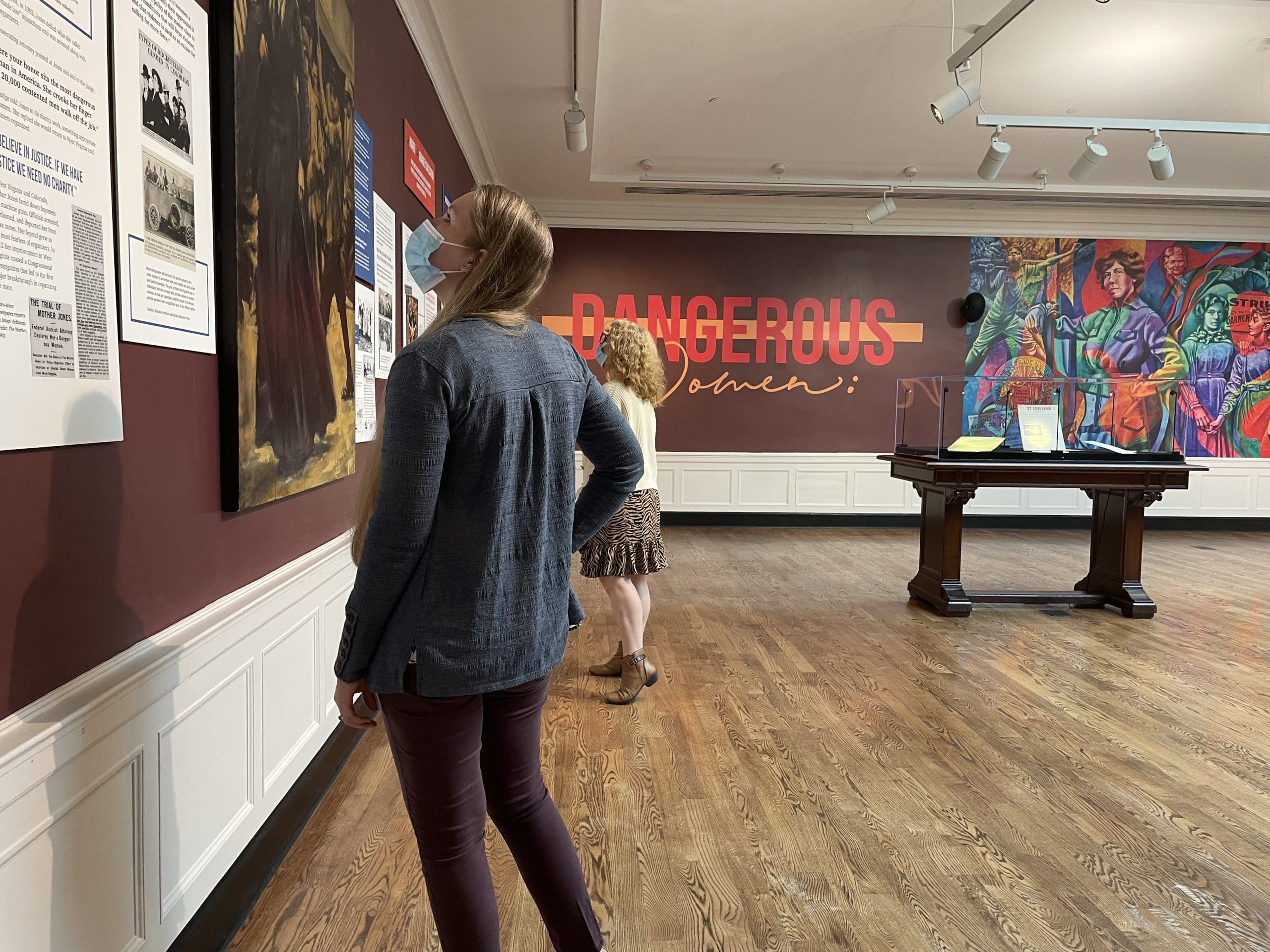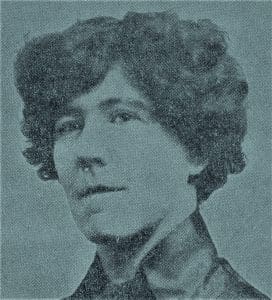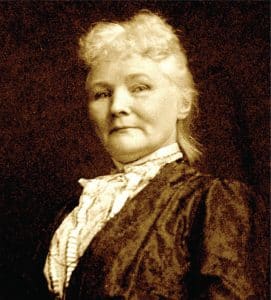The year is 1919. A woman lies dead in the streets of Brackenridge, Pennsylvania. Bullets riddle her body, and a cudgel has fractured her skull. Her crime: fighting for workers’ rights.
Born in Ohio in 1867, Fannie Sellins first encountered the world of labor unions in St. Louis, where she worked as a garment maker to support her four children after the death of her husband. Her work in organizing a local union for her fellow factory workers brought her to the attention of the district president of the United Mine Workers. At his behest, Fannie moved east, first to West Virginia, and then to the Allegheny River Valley, where she recruited miners of various ethnicities and backgrounds to the union’s cause.
On August 26th, an altercation broke out between striking union workers and local law enforcement. Reports differ on the exact events, but general consensus places Fannie on the scene with a group of women and children attempting to administer aid to a dying miner when police identified her as a leading member of the organizing committee. She was pursued down the street to the home of a union worker where she was shot four times in the back before being bludgeoned in the head and shot point-blank in the face. Her body was then unceremoniously tossed into the back of a police wagon while her murderers proceeded to toss her hat among themselves and dance alongside the truck carrying her body.
Fannie’s legacy is that of a woman who cowered before no man or law. According to her personal writings taken from The Point of Pittsburgh by Charles McCollester, Fannie regarded her work with the union as not just recruitment, but to provide “clothing and food to starving women and babies, to assist poverty-stricken mothers and bring children into the world, and to minister to the sick and close the eyes of the dying.” Her sense of moral justice led to her arrest on multiple occasions, where her release was once secured by none other than President Woodrow Wilson himself. Her murder by local law enforcement established her as a martyr for the cause and brought her story to the attention of “the most dangerous woman in America”...
Mary Harris Jones lived a life marked by tragedy. Her family fled her native Ireland when she was only five to escape famine, her husband and four children were all killed in a single week by a yellow fever epidemic in 1867, and her dressmaking shop was incinerated in the Great Chicago Fire in 1871. Yet for all the hardship that had marred her life, Mary refused to be broken. Instead, she turned her focus and heart on the plight of miners, factory workers, and the vulnerable masses of working-class families. Her efforts earned her two enduring monikers: Mother Jones and the ‘Most Dangerous Woman in America’.
For nearly six decades, "Mother" Jones worked tirelessly to champion the cause of workers’ rights, galvanizing not only men but also women and children in her crusade for fairer conditions and better pay. She participated in numerous strikes across the country, including the Great Railroad Strike of 1877 and the Haymarket Affair in Chicago in 1886, and led the March of the Mill Children in 1903 to protest the extreme danger of child labor. She was arrested on multiple occasions, even being tried for conspiracy to murder in 1913. Her twenty-year prison sentence was eventually commuted by President Wilson, just as Fannie Sellins was. When word reached Mother Jones of Fannie’s murder in 1919, she was heard to rue the fact that it had not been her own life cut short rather than that of Fannie’s.
Mother Jones continued to champion the cause up to her final days at the ripe old age of 93. A product of her Catholic upbringing, Mother Jones did not support women’s suffrage, seeing it as a collection of foolish women succeeding only in dividing the working class along a false line of gender. In her own words, Mother Jones believed that “you don’t need the vote to raise a little hell!” For better or worse, she was right in that.
As I reflect on the lives of these two women, one cut tragically short and the other marred by the tragedy of a different sort, I am struck by the unyielding courage they both possessed. They each risked life and liberty for the sake of their fellow neighbor despite rampant misogyny, and in the case of Fannie, paid for that risk with her life to see their crusade to victory. Because of their labor and that of their peers, we have unions that protect the lives and dignity of the men and women who built the infrastructure of our modern nation. We have laws that protect workers’ health and time, as well as agencies like the Food and Drug Administration and the Occupational Safety and Health Administration that maintain a high level of quality for both products and those that do the work of producing said products. Yet much remains to be done.
Unionizing remains a topic of not only heated debate but also considerable personal danger in nearly every professional circle. The list of fatalities due to striking and strikebreaking stretches long and delves into the cracks of our own lives. My hometown was the site of a massacre that saw the death of 23 people due to a coal mining strike gone awry. Even today, people routinely face threats of physical and financial harm due to organizing, while many states employ restrictive laws that provide little to no oversight on employers who exploit their employees. As we see more and more workers unify to protect themselves from unfair working conditions and unequal pay in businesses big and small, it is important to show solidarity with those brave enough to agitate for their rights and respect.
Visit Dangerous Women - An exhibit, now on display through January 7th on the third floor at Central Library, 1301 Olive Street. the exhibit is free and open to the public and explores the amazing true-life stories of Mother Jones and Fannie Sellins. Exhibit hours are 9 a.m. to 6 p.m. Monday-Thursday, 9 a.m. to 5 p.m. Friday- Saturday, and closed on Sundays and holidays.
There will also be a program for children on September 15, featuring a section on Clara Lemkin, a young Ukrainian immigrant who agitated for workers’ rights in 1909. Check our events calendar for more details as they become available.
– by Laura G., History & Languages Librarian






Add a comment to: Dangerous Women: Mother Jones and Fannie Sellins